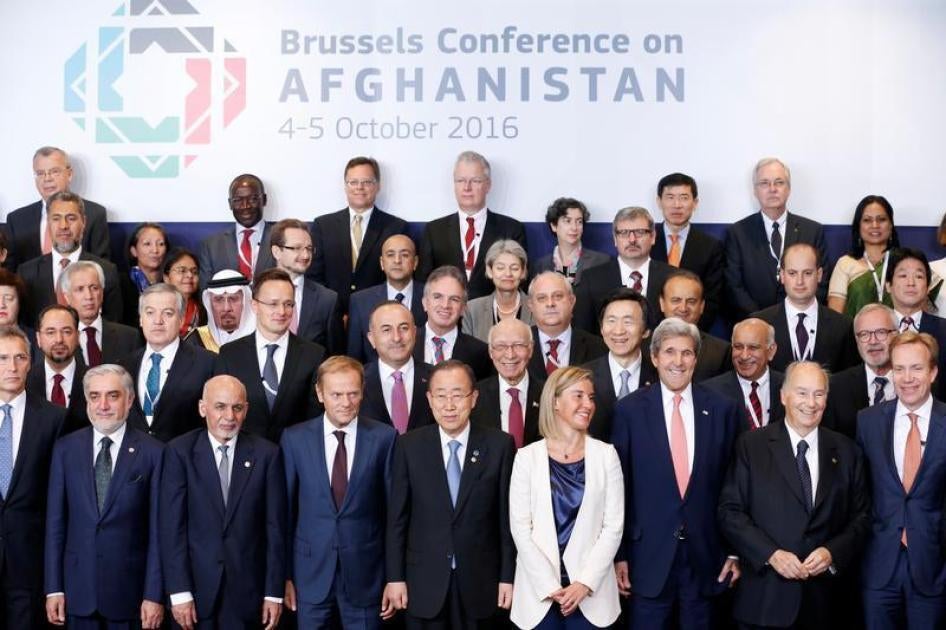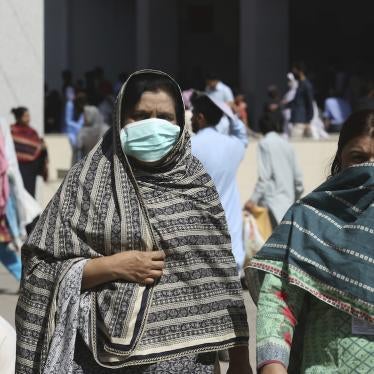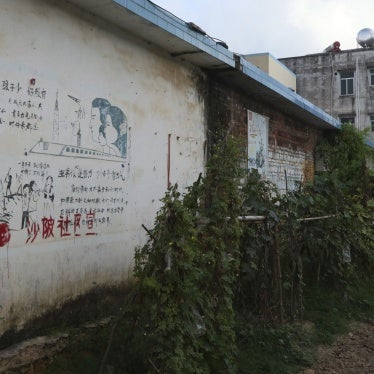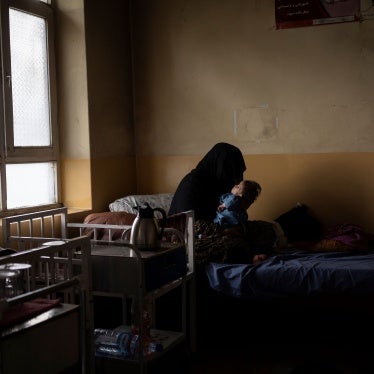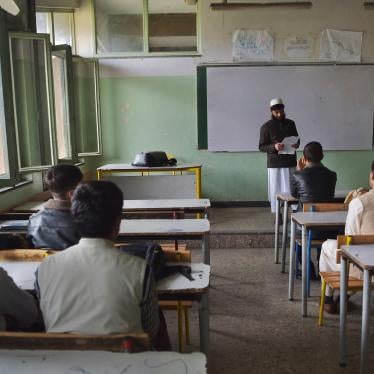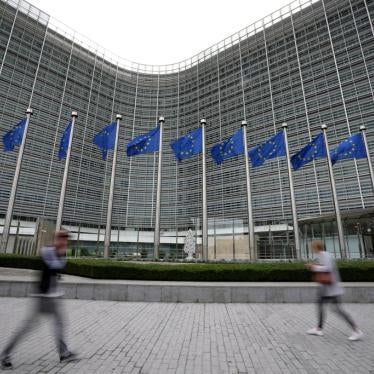“This is not a side event. This is the main event,” several speakers said at the – yes – side event on women’s empowerment the day before the October 5 donor conference on Afghanistan in Brussels. The donor session, for all its warm glow, highlighted the extent to which, while they continue to write checks, the donors have backpedaled from holding the Afghan government to account for rampant human rights violations.
Afghanistan’s president, chief executive, and first lady all took to the stage, as did the head of United Nations Women and two candidates vying to be the next UN secretary-general. There was consensus: Afghan women have come a long way since 2001, international support has been crucial in making that happen, but there’s still a very long way to go, progress is fragile, and there continues to be a need for major international support. Many of the 75 countries taking part touched on this theme as they pledged cash to help Afghanistan stay afloat for the next four years.
But at these conferences, the thing that really matters, aside from the $15 billion tally of checks – is the agreed-upon benchmarks that set measurable targets for the Afghan government and its partners. The benchmarks set at the conference – the product of months of negotiations between donors and the Afghan government – make it perfectly clear that rights have slipped off the table.
The reality is that when the Taliban government was defeated in late 2001, no donor intended to spend 15 years and counting, and more money than was spent on the Marshall Plan, trying to fix Afghanistan. They find themselves stuck, unable to extricate themselves, because of guilt, pressure, and the fear of what a collapsed Afghanistan would mean for their own security. But the optimism and desire to engage deeply in trying to help – and urge – the Afghan government find solutions for hard problems is long gone, and with it has gone much of the willingness to be serious about protecting human rights.
As long as donors remain deeply engaged in Afghanistan, they have an opportunity, and a responsibility, to try to improve a desperately difficult human rights situation. The Brussels Conference was, in this regard, an important and missed opportunity.
The conference was somewhat overshadowed by an unsavory deal cut days earlier between the European Union and the Afghan government to facilitate deportation of Afghan migrants from Europe. The benchmarks themselves were devoid of any mention of rights, except for references to “mineral rights” and the rights of private landowners in the paragraph on extractive industries.
Major rights issues of burning concern to Afghans got no mention at all. These include a recent peace deal granting amnesty to a notorious war crimes suspect, attacks on the media and human rights defenders, military use of schools and attacks on healthcare facilities, child soldiers, impunity for war crimes, spiraling civilian casualties including by government forces, use of torture, lack of freedom of information, government decisions that have undermined the country’s human rights commission, attacks against the Hazara ethnic minority, and shrinking access to education. That’s just to name a few.
Three benchmarks relate to women, but these also fail to genuinely take on the serious rights abuses happening in Afghanistan today. One promises the creation of a plan on women’s economic empowerment. This could be a good initiative, but reflects President Ashraf Ghani’s focus on economic empowerment as the solution to all problems for women, to the detriment of taking on other crucial rights issues such as education, health, and justice.
A second benchmark promises that the government will “demonstrate progress in implementing” National Action Plan (NAP) 1325 as specified in its implementation plan through annual published reporting in 2017 and 2018. This is a reference to UN Security Council Resolution 1325, adopted in 2000, which played a historic role in stressing the importance of women’s “equal participation and full involvement in all efforts for the maintenance and promotion of peace and security.” Women’s participation in peace negotiations is a burning issue in Afghanistan, where activists fear that women’s rights would be the first thing bargained away in negotiations between the government and the Taliban, and their efforts to secure some seats at the negotiation table have consistently been rebuffed.
The problem with this benchmark is that it promises implementation of a plan that does not exist. Afghanistan’s roadmap for involving women in the peace process has only been described in broad principles and lacks any detail about specific tasks, timelines, and benchmarks. The government promised a more detailed implementation plan by the end of 2015, but it has never arrived, at least not in any public form.
The third benchmark on women addresses violence against women, specifically Afghanistan’s ground-breaking but poorly enforced 2009 Law on the Elimination of Violence Against Women. The benchmark promises the expansion of existing specialized prosecution units, and the creation of specialized courts. The specialized prosecutors seem to be a useful initiative; the utility of specialized courts is less clear. But neither of these benchmarks will provide a scrap of insight about what really needs to be measured – how many cases are brought under the law, what proportion of complaints about violence against women lead to prosecution, how these cases are resolved, and how these indicators break down province by province and district by district.
A previous donor conference, in 2012 in Tokyo, led to a benchmark under which the Afghan government made a commitment to produce this type of detailed reporting on enforcement of the law, and actually did so, briefly, in a manner that permitted the kind of tracking or trends and diagnosing of localized and systemic failures necessary for improving enforcement. However, Ghani’s government, installed in late 2014, dumped this approach, without a whisper of opposition from donors.
With donors looking for the exit, Afghan activists are making the best of it – expressing gratitude, putting forth their case for continued support. But they can see the interest slipping away. And their tasks seem enormous in a country where half of all girls still don’t go to school, health care is out of reach for many women, violence against women is commonplace and rarely punished, abusive practices like imprisoning women for fleeing abuse and the using of scientifically meaningless “virginity exams” continue, activists and high-profile women face threats and murder, and peace negotiations pose real risks for women’s rights.
Donors may be running out of ideas on how to help fix Afghanistan, but they are much too central in the human rights mess unfolding there to walk out and shut the door. They should make use of past lessons and target their support to bring effective and lasting change, and do much more to hold the Afghan government to account for rights violations, not least the widespread abuses against women.

